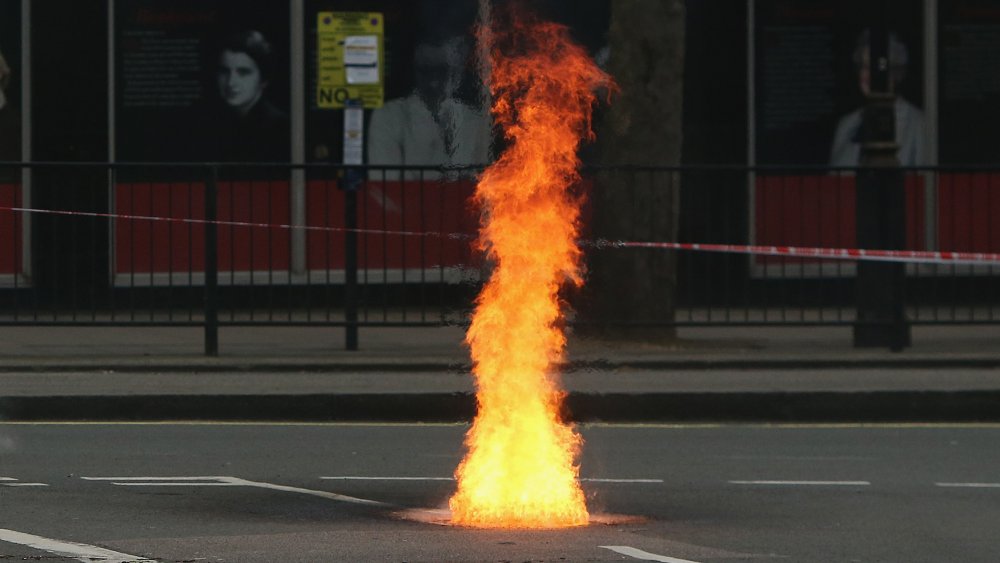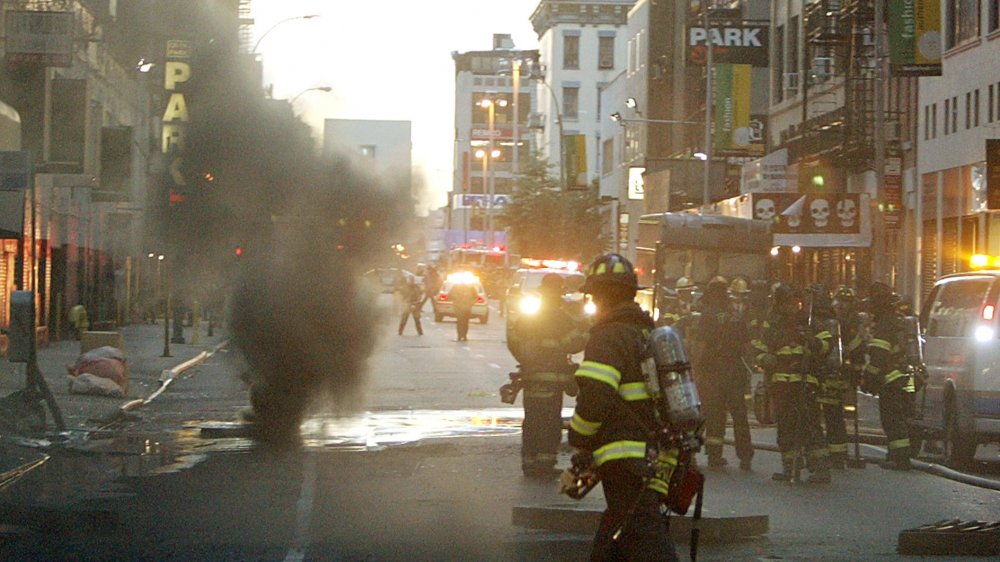What Causes Manholes To Explode?
In July 1957, a nuclear bomb might have blown a half-ton manhole cover into space. If true, then it technically beat the Russian satellite Sputnik in the space race. Astrophysicist Dr. Robert Brownlee, who worked at New Mexico's Los Alamos National Laboratory, recounted the incident to the Register. Scientists assigned to Operation Plumbbob detonated small nukes hundreds of feet below Earth's surface. A bomb test called Pascal-A proved 50,000 times more powerful than anticipated, and fire burst hundreds of feet into the air from an uncovered 500-foot-deep borehole. So for Pascal-B, they capped a 400-foot borehole with a four-inch-thick lid made of metal and concrete.
The gargantuan manhole cover vanished after rocketing through the heavens in excess of 37 miles (roughly 60 kilometers) per second, or more than five times Earth's escape velocity. Brownlee initially believed the lid vaporized. However, after working on missile launches he concluded that the lid "didn't have time to burn all the way up." Disappointingly, most flying manhole lids aren't nuke-induced space debris. But even when common manholes blow their tops, it seems like a bomb went off.
Fire in the manhole
Business Insider writes that New York City sees an average of six manhole explosions a day, and they are doozies. In 2019, Inman Mussud was escorting his son to school when a manhole explosion lifted their cab off the ground. Mussud said his head crashed against the car roof, as did his son's. The first week of February 2015 saw 600 such explosions. In one of those instances, a 71-year-old man narrowly cheated death when an airborne manhole cover clocked him on the noggin. New York Fire Department Battalion Chief Steve Corcoran told the New York Daily News that the lid flew 50 feet into the air after a subterranean explosion and landed a "glancing blow" on the septuagenerian's skull.
So what makes the bowels of the street go boom? According to How Stuff Works, it usually works like this: underground wires become exposed by caustic chemicals gnawing rats, or age-related decay. Business Insider adds that in the winter, corrosion results from rock-salt-saturated water seeping through the ground onto wires. Because these cables carry as much as 13,000 volts of electricity, they can ignite insulation made from paper, lead, and rubber. The flames cause built-up manhole gas to combust, sending lids that weigh 85 to 300 pounds (35 to 136 kilograms) hurtling skyward. Essentially, the street accidentally lights its own farts.

